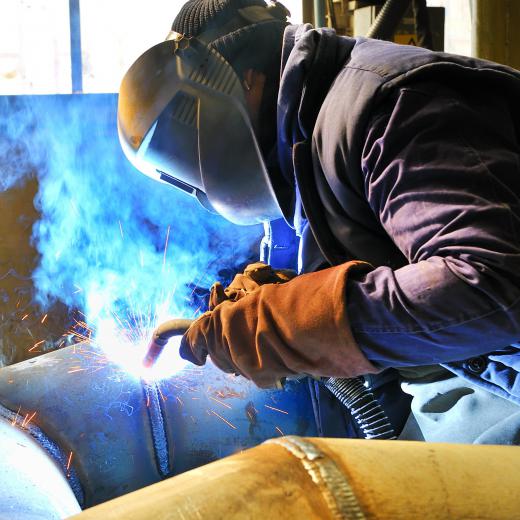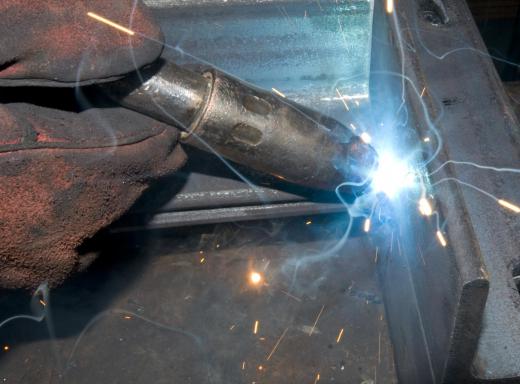A Metal Inert Gas (MIG) welding system and a Tungsten Inert Gas (TIG) welding system both have many similarities, but their fundamental differences are what makes them suitable for specific applications. The MIG and TIG welder both use an inert-shielding gas for the electrode, but, in metal inert gas welding, the electrode is slowly consumed and, in tungsten inert gas welding, it is not. The systems also vary in that the MIG and TIG welder use different filler materials for the weld joint or weldment assembly, as it is called. In the case of TIG welding, autogenous welds can be created using just the metal of the parts without the need for any filler. MIG and TIG welder equipment can be substituted for each other in common, low-stress applications where convenient.
MIG welding is considered a more general purpose of welding that is commonly used in the automotive industry. It is faster than using TIG welders and can be easily automated. Since it is an easier, more forgiving process to learn, set-up times are reduced and mistakes can be more readily corrected. The downside to a MIG welder is that it is a messier form of welding and produces more spatter and smoke than the use of a TIG system will. Hidden weaknesses in a weld are also more common with a MIG welder because of the smoke and hot particles that obscure the weld as it is being made, and this can lead to welds that look good superficially, but may have hollow interiors.

TIG welding typically allows for a much cleaner weld and work environment, and as a result is commonly used in the aerospace industry. The welds themselves can be stronger when the metal of the parts are used to form them instead of an intermediate filler, and contamination levels are significantly lower than with MIG welding. Thin metals are commonly welded by a TIG machine due to this increased precision as well. The biggest downside between a MIG and TIG welder if a TIG is chosen is that the equipment is significantly more expensive, and the welding process is slower and more demanding.

Both the MIG and TIG welder were developed in the 1940s for different industrial uses. The TIG welder was built specifically for the aerospace industry and was known as Gas Tungsten Arc Welding (GTAW) to distinguish it from the gas arc welding system of MIG that doesn't use a tungsten electrode. The original use for MIG welding was to join together aluminum and other non-ferrous metals, and it was referred to as Gas Metal Arc Welding (GMAW). Improvements in MIG welding design, including incorporating lower cost inert gasses such as carbon dioxide and other developments into the 1960s, made it a more versatile welding system that could be used on steel in a wide variety of industrial settings.
